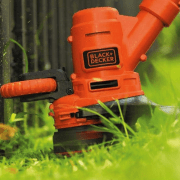Storms and heavy rainfall is not uncommon in urban areas, even though they don’t occur regularly. While it aids irrigation and replenishes the water table, stormwater can also cause potential damage. The stormwater needs to flow out from some place as the ground can’t soak all of it.
Stormwater can pool up when it lands on non-permeable material like asphalt or concrete near your property. Due to water pooling near your property, floods might also be triggered. Therefore, you need an effective stormwater system near urban properties.
Table of Contents:
Top Ways for Stormwater Management
- Build Infiltration Trenches
- Install Underground Storage Tanks
- Use Green Roofs
- Plant Protective Trees
- Create Permeable Pavers
- Get Rid of Bare Soil
Top Ways for Stormwater Management
Rainwater harvesting is an effective method to prevent the wastage of rainwater. It ensures that rainwater can be captured and put to different uses. Similarly, you have quite a few ways to manage stormwater and prevent it from causing various issues. The top ways to tackle stormwater are as follows:
Build Infiltration Trenches
Infiltration trenches are great for properties in areas where small but frequent storms keep occurring. Infiltration trenches are usually three to twelve feet deep. You will have to line infiltration trenches and fill them with aggregate to collect the stormwater runoff. It helps in directing the stormwater to the ground. Even in the case of large storms, an infiltration trench can be used to manage stormwater. But you only need to combine the infiltration trenches with another strategy for managing water runoff.
Install Underground Storage Tanks
An excellent option for managing stormwater in urban areas is to install underground tanks. They are known as basins, cisterns or collection tanks and are usually made from concrete, fibreglass, plastic or steel. Underground storage tanks are generally installed underneath parking lots, driveways or other areas through which stormwater cannot pass. You need to slop the ground at a specific point to ensure that the excess stormwater goes into the tanks directly. Underground storage tanks are usually covered by aggregates that help in collecting the excess stormwater.
Use Green Roofs
With the increasing need to save water, a new trend of green roofs has emerged. Green roofs offer a plethora of benefits apart from managing stormwater. They help in collecting rainwater so that it can be used to nurture various types of vegetation. The vegetation is suitable for growing directly on the roof. It also ensures that excess water gets filtered. Moreover, the flow of stormwater to nearby sewers gets moderated to prevent overloads.
Plant Protective Trees
Trees can play a crucial role in managing excess stormwater. Everyone is familiar with the fact that tree roots can filter and absorb stormwater runoff. Therefore, planting a few protective trees around your property is quite a sensible thing to do.
It is an excellent method to manage stormwater runoff when combined with water management systems. Permeable pavers allowing water infiltration to the soil along with tree roots can help maintain healthy trees. Hardscape surfaces like asphalt or concrete are not suitable as they choke off the water supply to the trees.
The canopies of protective trees are also helpful in slowing the amount of rainfall hitting the ground and spreading it over a large area. Natural and native plants are more beneficial for stormwater management than artificial tur. They can absorb more rainwater and help in preventing floods naturally. Therefore, you should replace fake grass on your property with more native plants.
Create Permeable Pavers
One of the most efficient ways of managing stormwater is to create permeable pavers. Permeable pavers can be used in residential, commercial as well as industrial areas instead of asphalt and concrete. Stormwater will go into the ground through the pavers.
Your permeable pavers should have flexible joints. It will ensure that the pavers don’t crack during season change or due to movement of the soil. If you are going with plastic pavers, you need to ensure that they don’t need staking or clips.
It will ensure that the permeable pavers last in all types of climate and are durable for more than 20 years. They can help in eliminating puddles, floods and ruts for decades.
7. Get Rid of Bare Soil
A significant problem in managing excess stormwater is bare soil. Similar to concrete, bare soil also prevents stormwater from entering the ground. You should cover bare soil in any area of your property with mulch or other ground covers.
Final Thoughts
Stormwater management is an essential factor to consider for property owners. It is necessary for areas where constructed surfaces alter the hydraulic properties of the soil and restrict infiltration. Building an effective stormwater management system is not too difficult.
You can use any of the systems given above according to the requirements of your property. But the stormwater management system should be well-aligned with the climate, topography and other resources.














Comments